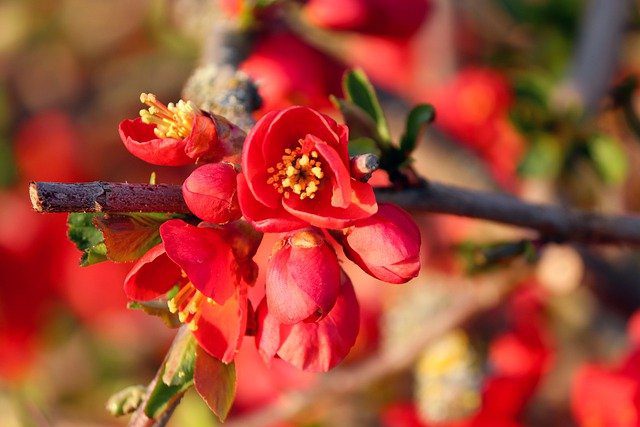The thought of quinces (Chaenomeles spp.) in bloom stimulates images and also memories of essential, spring flowering, heirloom plants. Traditional? Absolutely. Quinces that are in bloom are understood to have actually been cultivated for over 400 years, however affection for quinces certainly dates back thousands of years. Belonging to the rose family, flowering quinces are springtime show stoppers that usher in the growing season with the likes of magnolias, blooming cherries, as well as forsythias.
Flowering quinces comprise a generally tiny genus including only three species: Japanese flowering quince (C. japonica), common flowering quince (C. speciosa), as well as the Cathay flowering quince (C. cathayensis). Although Japanese flowering quince is most likely one of the most fine-tuned of the team, creating a small spreading shrub with much less threatening spines, the blossoms often tend to be tiny and also restricted in color from salmon to orange. The cultivar ‘Sargentii’ is fairly common of real Japanese flowering quince. In contrast, the Cathay flowering quince is a monster. This small tree has prickles that could be wielded like a weapon from the middle ages. In spite of the appealing pink blossoms, unless you have a recurring fight with your neighbor, you possibly wish to leave this for Genghis Khan. The real magic of flowering quinces, however, exists within the typical flowering quinces that sport big flowers, in a palette of a variety of colors, consisting of streaked flowers as well as flowers that change in color with age (e.g., ‘Toyo-Nishiki’). If five petals aren’t sufficient for you, the usual flowering quinces have actually generated a number of variants with extra-petaled, double blossoms.
Now, where it becomes exciting, is that all three of these species intermix and generate fertile progeny. Several desirable hybrids have come from blending C. japonica as well as C. speciosa into the crossbreed grex, C. xsuperba. Nonetheless, every feasible combination of these 3 varieties has been reproduced, consisting of the three-species hybrid, dubbed C. xcalifornica. When taking into consideration the features of all three types, the capacity for combining desirable attributes from this bunch are significant. This has not gone unnoticed. Because the intro of flowering quinces in Europe throughout the late 18th century, over 500 cultivars [see Weber, C. 1963. Cultivars in the genus Chaenomeles. Arnoldia 23( 3 ):17 -75] have been chosen as well as called, including numerous hybrids. As holds true for fashion and also horticulture, the appeal of flowering quinces has actually waxed and waned gradually, and also today there are typically just a handful of cultivars easily found in the profession. So, has this genus reached its max? Not quite. Many new possibilities still exist for reproducing enhanced flowering quinces.

